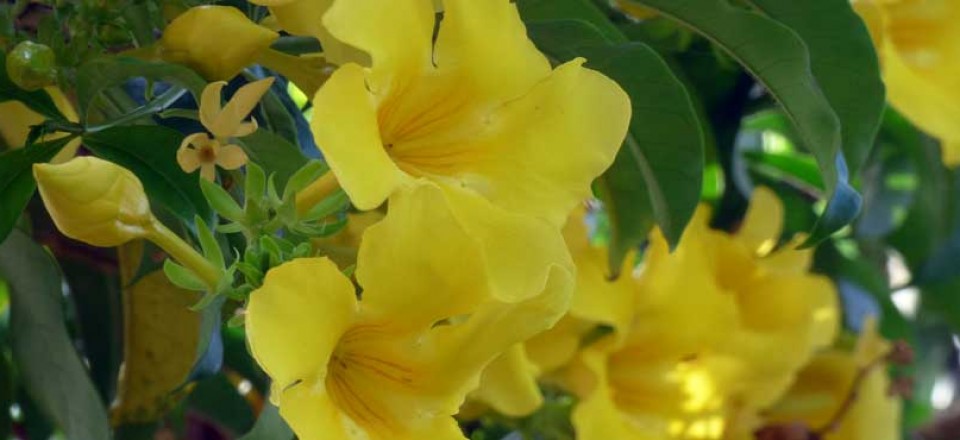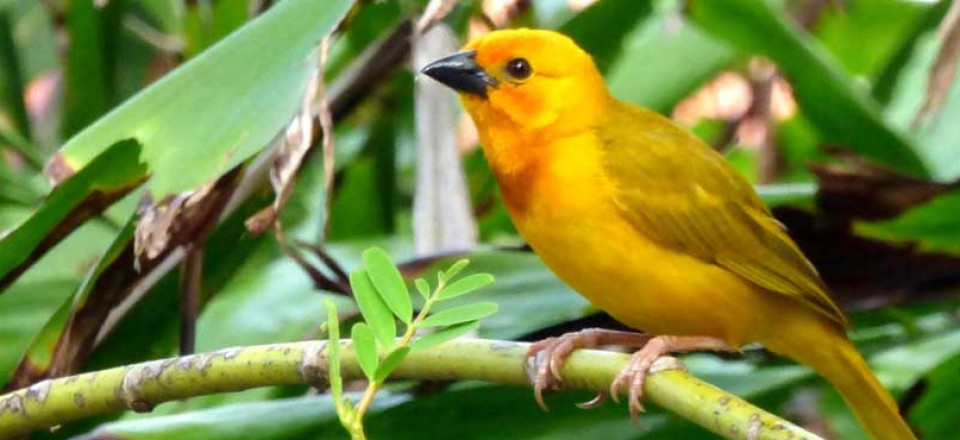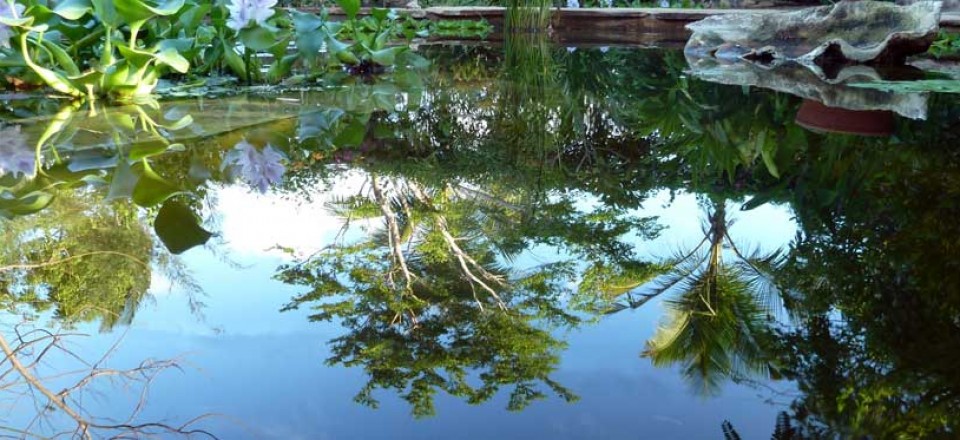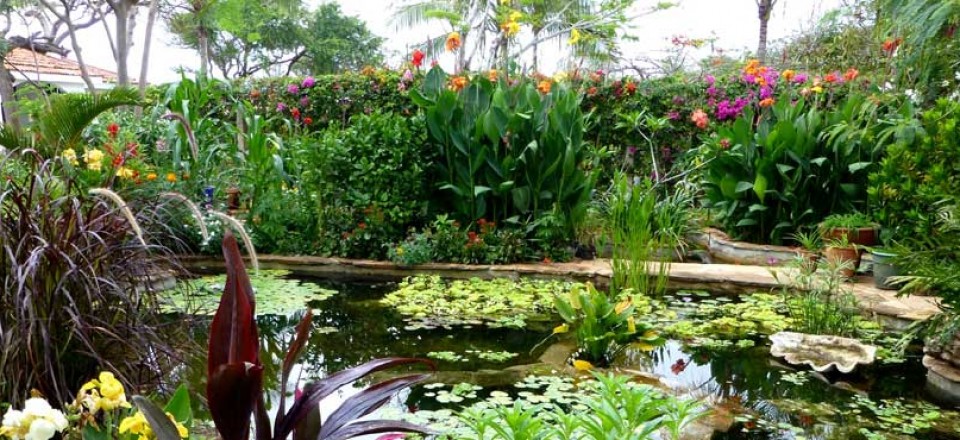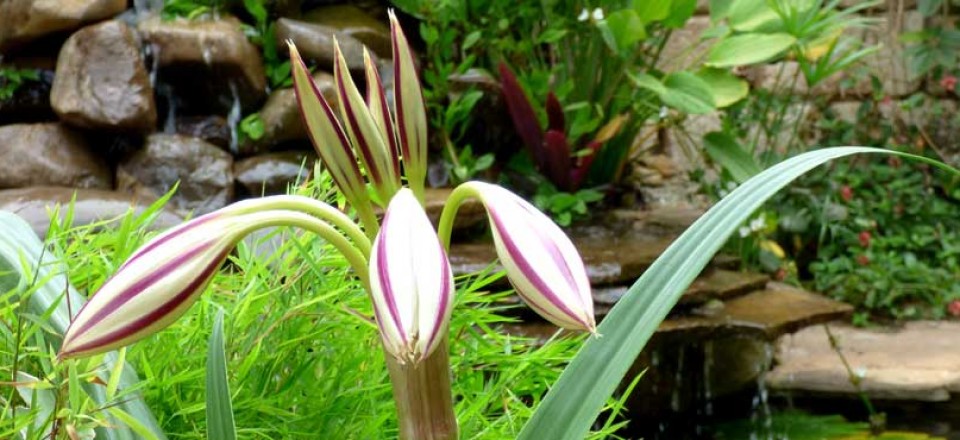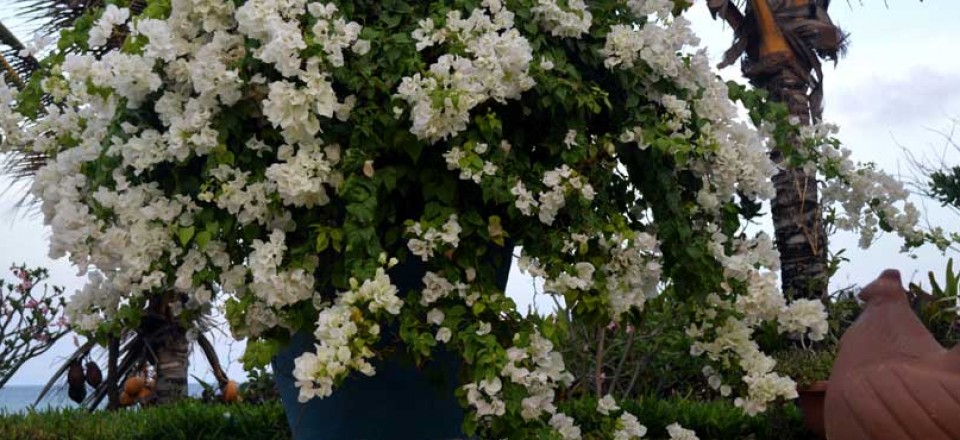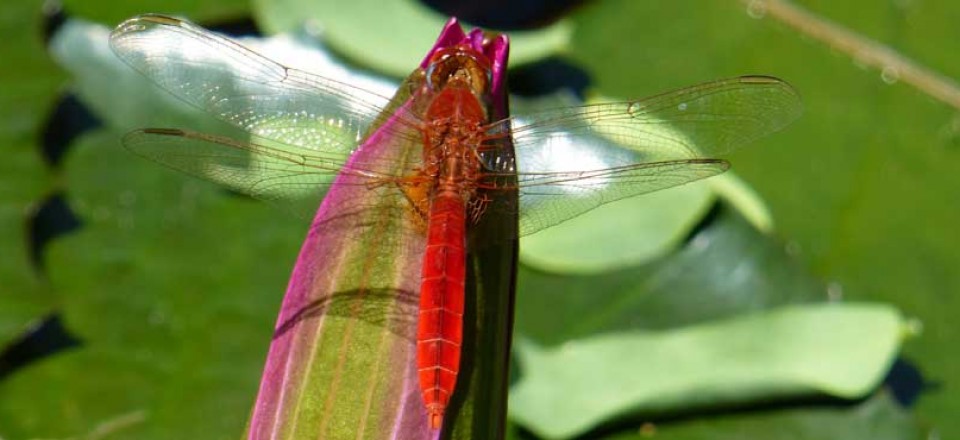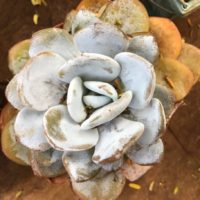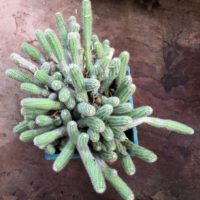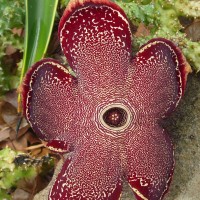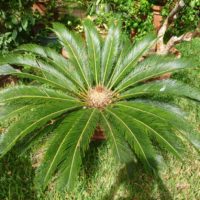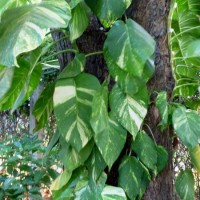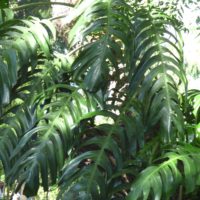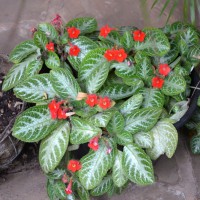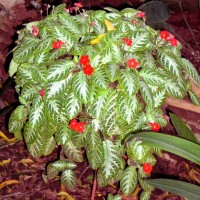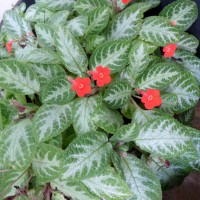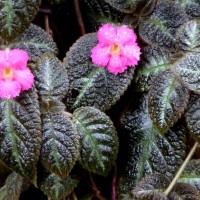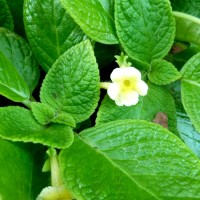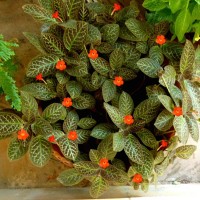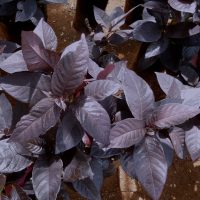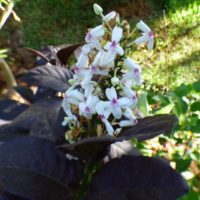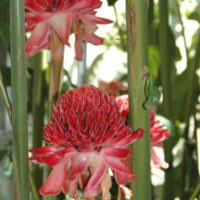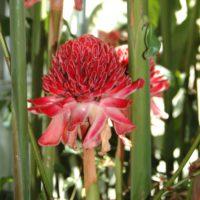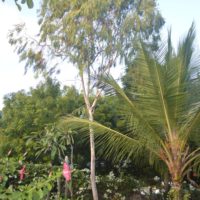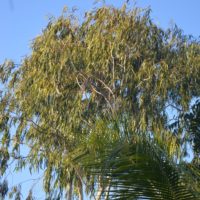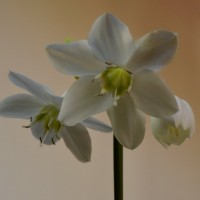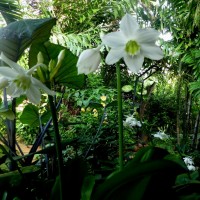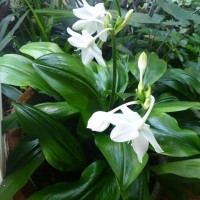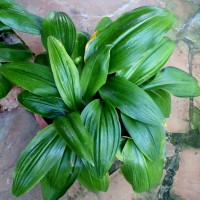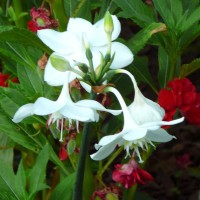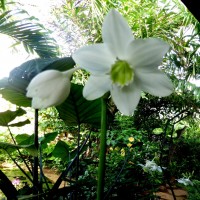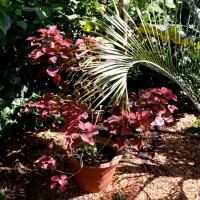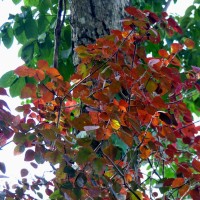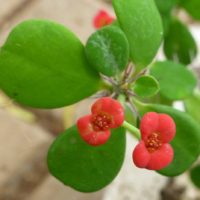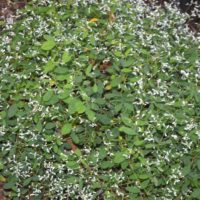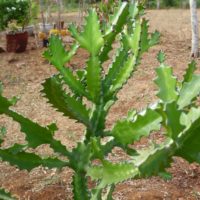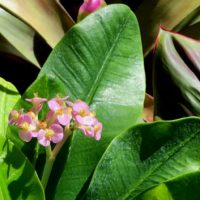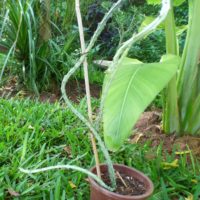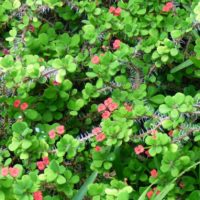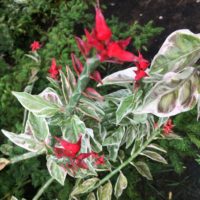ECHEVERIA LAUI
Family Crassulaceae
Echeveria lauii is native to Oaxaca in Mexico (Note: all Echeverias are native to Mexico and Central America). It is slow growing and can be a challenge to get to do well. It needs full sun; the leaves tend to shrivel if the light levels are too low.
Unlike other Echeverias, these leaves are difficult to get to root, so seed is possibly the best method of propagation.
Updated 17/9/2018
ECHINOPSIS CHAMACEREUS
Family Cactaceae
Echinopsis chamaecereus is thought to be native to Argentina, it was collected by Carlo Spegazzini in the early 20th century, since the plant has not been found growing in the wild scientists can’t be certain. These grow best in pots, the medium should be very well draining. Like all cacti, Echinopsis like strong light, with a little protection from the mid-day sun. When watering the plant, water it thoroughly and then wait until the soil is dry before giving it more water, as the plant suffers from root rot. Updated 17/9/2018
EDITHCOLEA GRANDIS
Family Apocynaceae
Edithcolea grandis is found throughout East Africa and the Horn of Africa. It was named after Miss Edith Cole (1859-1940), who travelled with Mr and Mrs Lort Philips on a botanical expedition in 1895. The plant grows easily in the ground, it doesn’t require any special treatment or extra water. When it is not in flower, the plant is insignificant, but the flowers are amazing and have been described as resembling a Persian carpet. Unfortunately, they smell awful—a means to attract flies (myiophilous pollination). Updated 17/9/2018
ENCEPHALARTOS
Family Zamiaceae
Encephalartos altensteinii is possibly the ‘oldest plant in the world. It was collected in South Africa in the early 1770s and taken to England in 1775. There are about 60 species of Encephalartos all of which are from Africa. They are dioecious, requiring both male and female plants. Updated 17/9/2018
EPIPREMNUM
Family Araceae
Epipremnum, native to the Solomon Islands in the Pacific, is a hemiepiphyte. The initial small leaved plant, when given a chance, will climb trees, walls, or anything it can adhere to, at which point the heart shape leaves become huge, reaching up to 3 feet across. In Northern Australia; Sri Lanka and other countries it is causing serious ecological problems.
Epipremnums are among the easiest plants to care for. To keep the leaves small the plant needs to be pot bound. The leaves are not saline tolerant and get burnt easily.
The Florida Exotic Pest Control Council list of 1999 classes it as an invasive species. All parts of this plant are toxic to humans, cats and dogs. Updated 17/9/2018
Epipremnum aureum
Epipremnum pinnatum
EPISCIA
Family Gesneriaceae
Episcia is a genus of 10 species found in the tropical regions of Central and South America. They are related to African Violets and are grown for their attractive foliage and the vividly coloured flowers.
Episcia can be difficult plants to grow. They can only tolerate small amount of sun and need to be kept on the dry side, they may look unhappy if under watered, but will die if over watered. They are easy to propagate—the plant sends out stolons (like strawberry runners), which can be cut and planted in a new pot. Updated 17/9/2018
ERANTHEMUM NIGRUM
Family Acanthaceae
Eranthemum nigrum is a striking plant with nearly black leaves, that is drought tolerant and can withstand a lot of neglect. It grows best in the shade, requires water from time to time and mulched to retain the moisture. The plant may be pruned to keep in shape; the off-cuts can be used for cuttings, which grow easily. The plant is prone to mealybug attack the affected branches can be removed. Updated 17/9/2018
ETLINGERA ELATIOR
Family Zingiberaceae
Etlingera elatior, native to Malaysia, is a fast-growing plant which reaches up to 1m in height. It prefers to grow in dappled shade, in good compost with added manure and kept damp all the time. Etllingera elatior has been difficult to establish at the coast. Updated 17/9/2018
EUCALYPTUS
Family Myrtaceae
Eucalyptus is derived from the Greek eu “well” and kalýpto “to cover” referring to the operculum on the calyx that initially conceals the flower. There are more than 700 species of eucalyptus and most are native to Australia, which is covered by 92,000,000 hectares (227,336,951 acres) of eucalyptus forest, comprising three quarters of the total area covered by native forest. In February 2016, researchers found evidence supporting the antimicrobial action of eucalyptus.
Eucalyptus regnans is the tallest known flowering plant on Earth and the second tallest tree, (Sequoia sempervirens being the tallest). Updated 17/9/2018
EUCHARIS AMZAONICA
Family Amaryllidaceae
Eucharis amazonica, is native to Central and South America with 16 species. These plants grow in the rain forests and are understory plants that manage without much bright light. It is a bulbous plant, with large, broad, dark green and spectacularly showy leaves resembling Hostas. These are best grown in pots, they like to be pot bound and dislike being disturbed, only re-potted only when necessary. The tip of the bulb’s neck should remain slightly above the soil surface. Eucharis amazonica like to be kept moist all the time, but not over watered, fertilise every month to encourage the plant to flower. Amaryllis caterpillar can be a problem. Updated 17/9/2018
EUGENIA UNIFLORA
Family Myrtaceae
Eugenia uniflora is native to the east coast of tropical South America. It has spread throughout the tropics and in Bermuda it is listed as invasive. New leaves are coppery in colour, maturing to a deep glossy green.
Eugenia uniflora is easy to grow, preferably in light shade and rich, well-draining soil. The fruit is high in Vitamins C and A, but it can be very sweet or very sour.
EUPHORBIA
Family Euphorbiaceae
The Euphorbia genus name is derived from Euphorbus, the Greek physician to Juba II, King of Mauretania, was first described by Carl Linnaeus, in 1753.
Their origin is from the deserts of Southern Africa and Madagascar, and are now found all round the world. It is a very large and diverse genus, with approximately 2000 members. The plants all extrude a milky, white latex-like sap, which is poisonous. Euphorbia’s floral structure is unique; the flower’s head looks like a single flower, in fact there are many tiny florets, each reduced to the barest essential part needed for sexual reproduction. It is the only genus of plants that has all three kinds of photosynthesis, CAM, C3 and C4. Updated 17/9/2018
Euphorbia cotinifolia
Euphorbia cotinifolia is native to Mexico; it is a tree, reaching 9 m, but is best treated as a shrub. Grow this plant in full sun, with well drained soil. It is easy to grow, it is not fussy about the soil conditions, and is drought tolerant. The sap is poisonous, it has been used for folk remedies, and fishermen added the sap to the water, stunning the fish, so they could catch them. It was also used to poison arrowheads. Cuttings root easily.
Euphorbia geroldii
Euphorbia geroldii is endemic to Madagascar but its natural habitat is threatened and it is now listed as critical. Euphorbia geroldii is an attractive plant, flowers all the time and has no thorns. It grows best in the ground.
Euphorbia hypericifolia
Euphorbia hypericifolia flowers throughout the year and requires little maintenance, since it needs little water, no feeding, and attracts no pests. It grow in sun or shade, though in the sun it will be a more compact. It is salt tolerant.
Euphorbia lactea
Euphorbia lactea is an architectural plant that looks stunning when carefully placed in the garden. It is so easy to grow, and needs no special care. If a piece of the plant falls to the ground, it grows.
Euphorbia lophogona
Euphorbia lophogona was introduced into Europe from the east coast Madagascar by Jean Baptiste Lamarck in 1786, the species is not extinct there and is on the critical endangered list.
endemic to Madagascar is now threatened by habitat loss. In this garden the plant grows in shade, getting the afternoon sun. It is drought tolerant, during the dry season sheds its leaves and waits for the rains the leaves appear followed by flowers. It needs a fast-drained medium which is top dressed yearly.
Euphorbia meridionalis
Euphorbia meridionalis is native to Kenya and Tanzania. It is a succulent that has four-angled stems, the stems tend to be weak stem and may needs support. It is a strong growing plant and it growth may need to be curtailed.
Euphorbia mili
Euphorbia mili originates from Madagascar, and is a thorny shrub, reaching a height of between 10 and 50 cm. It likes full sun, the stronger the sunlight the more intense colour of the flowers which may be of several different colours. It flowers less in the shade.
Euphorbia tithymaloides
Euphorbia tithymaloides is native to tropical and subtropical North and Central America. It grows best in sandy, well-drained soil, intolerant of saline. Euphorbia tithymaloides likes to grow in full sun, and can reach heights of 2 metres. It is tough plant that can fast become invasive. Based on folklore, Euphorbia tithymaloides is used to treat many ailments including asthma, insect strings, and earache. None have been scientifically proven.

